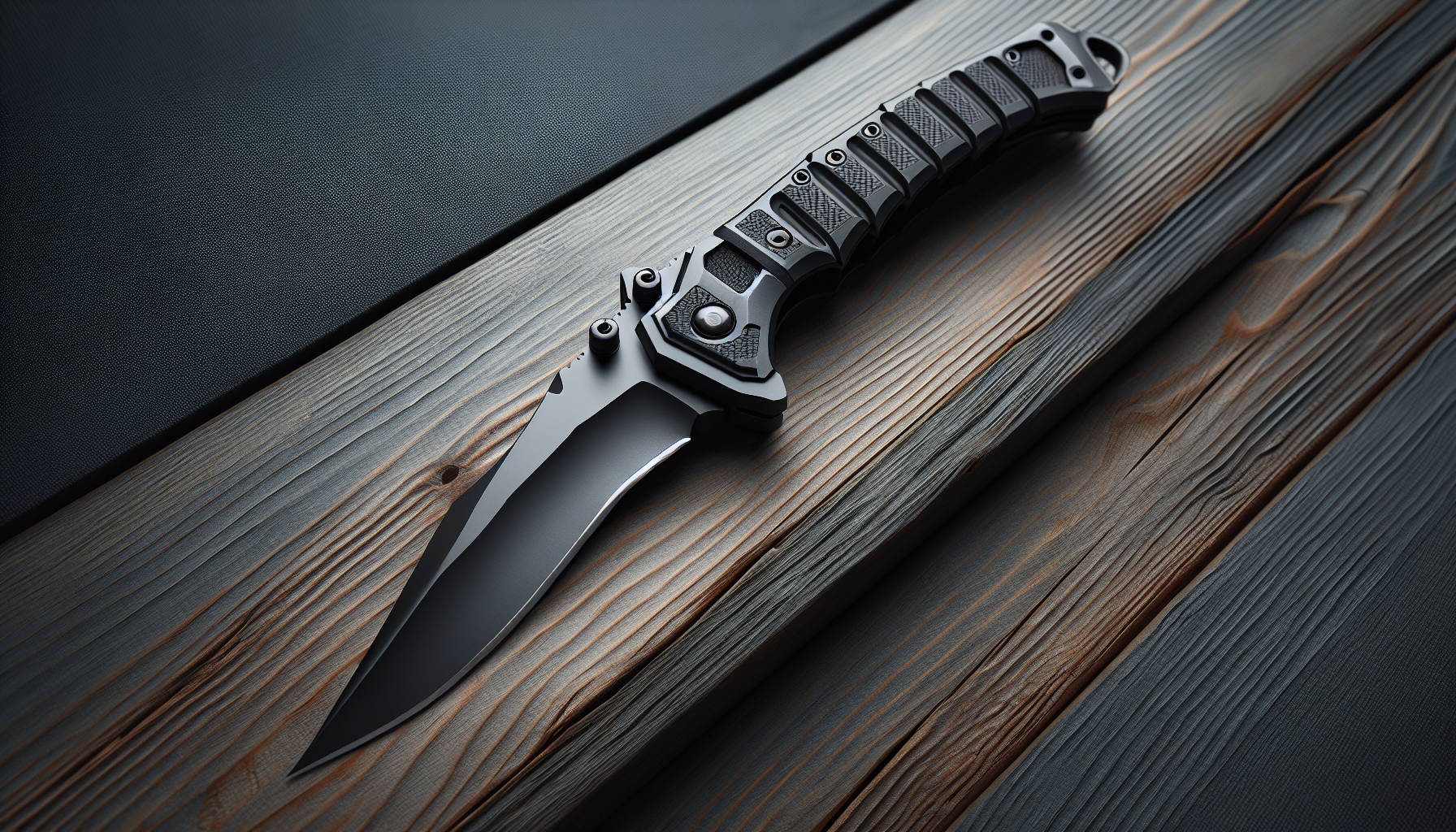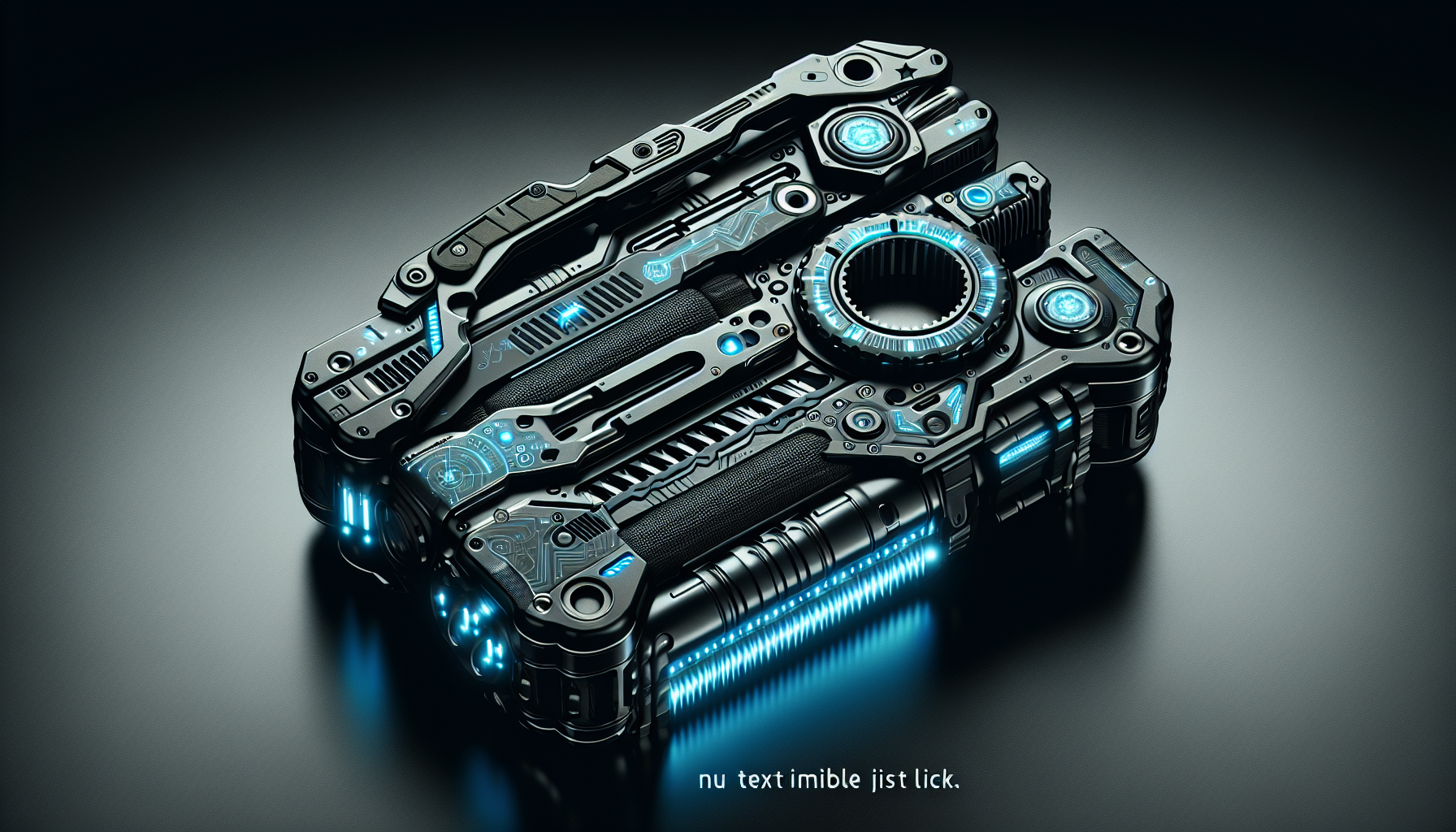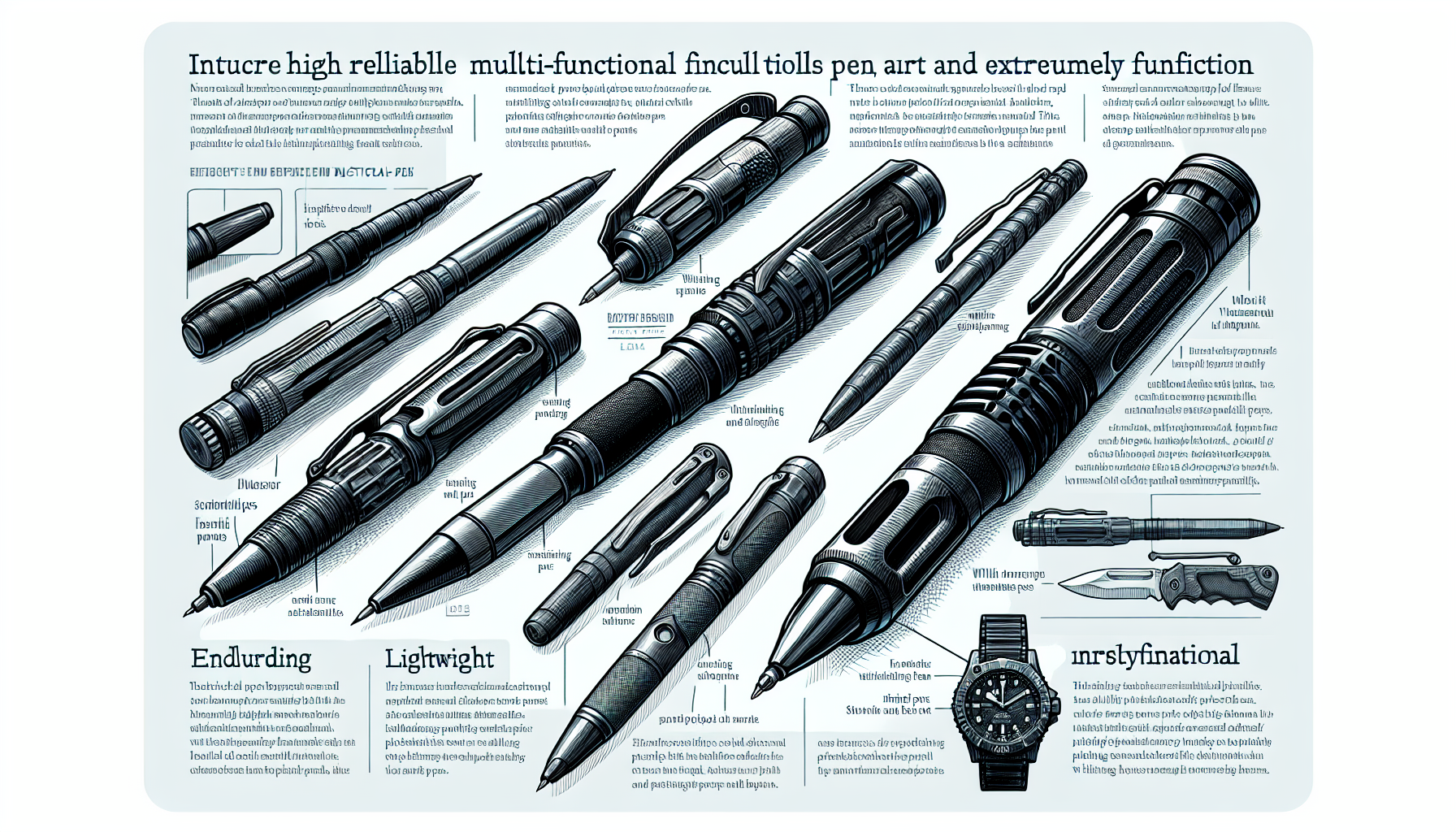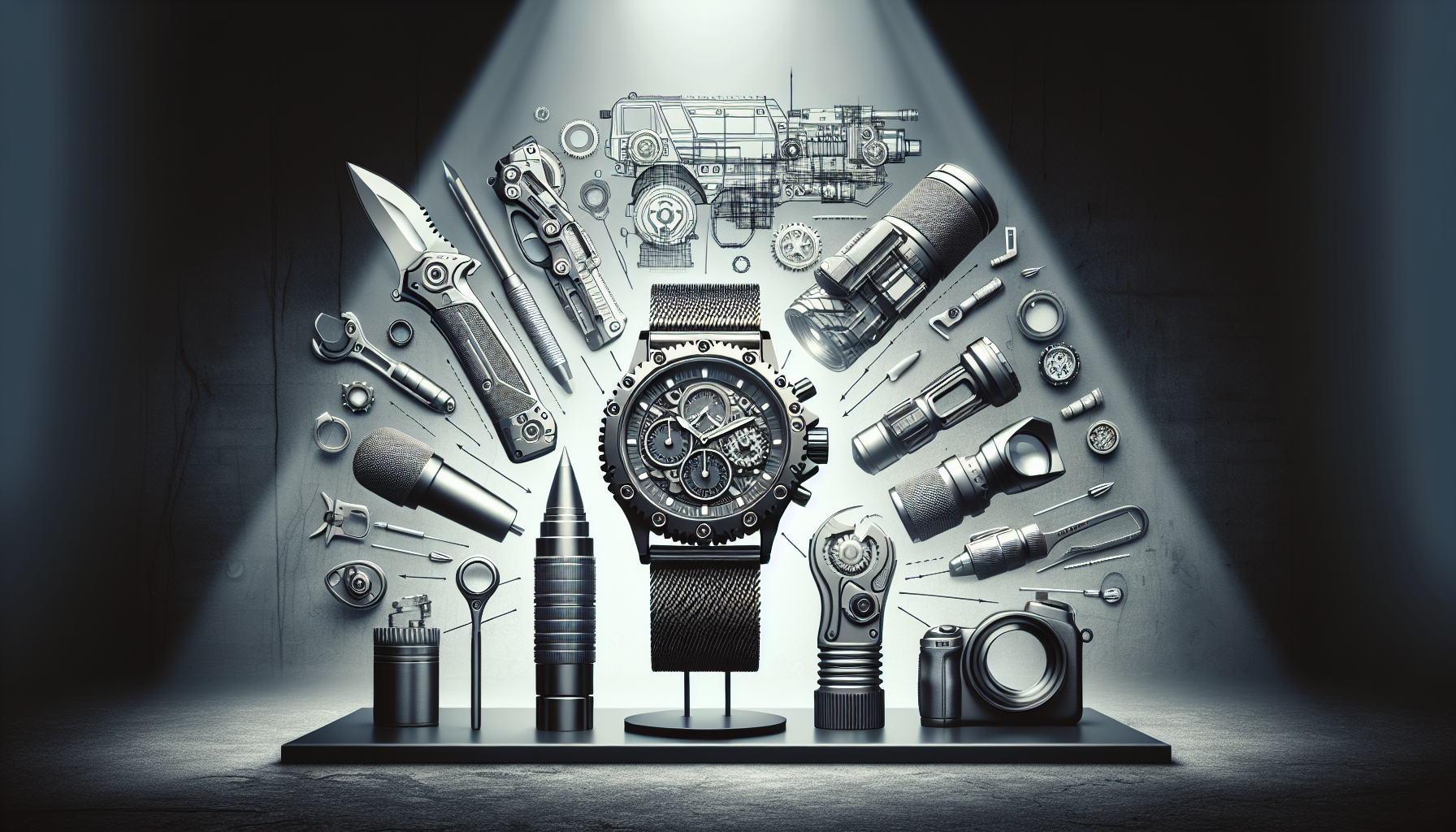The Beginner’s Guide To Selecting The Right Tactical Knife For You
The Beginner’s Guide To Selecting The Right Tactical Knife For You
In the world of outdoor enthusiasts, having a reliable and versatile tool is a must, and what better tool than a tactical knife? But with so many options available, selecting the right one can be overwhelming for a beginner. Fear not, as this guide is here to help you navigate through the vast selection of tactical knives, providing you with essential tips and factors to consider, ensuring that you find the perfect knife that suits your needs and preferences. By the end of this article, you’ll be equipped with the knowledge to confidently make an informed decision on selecting your very own tactical knife.
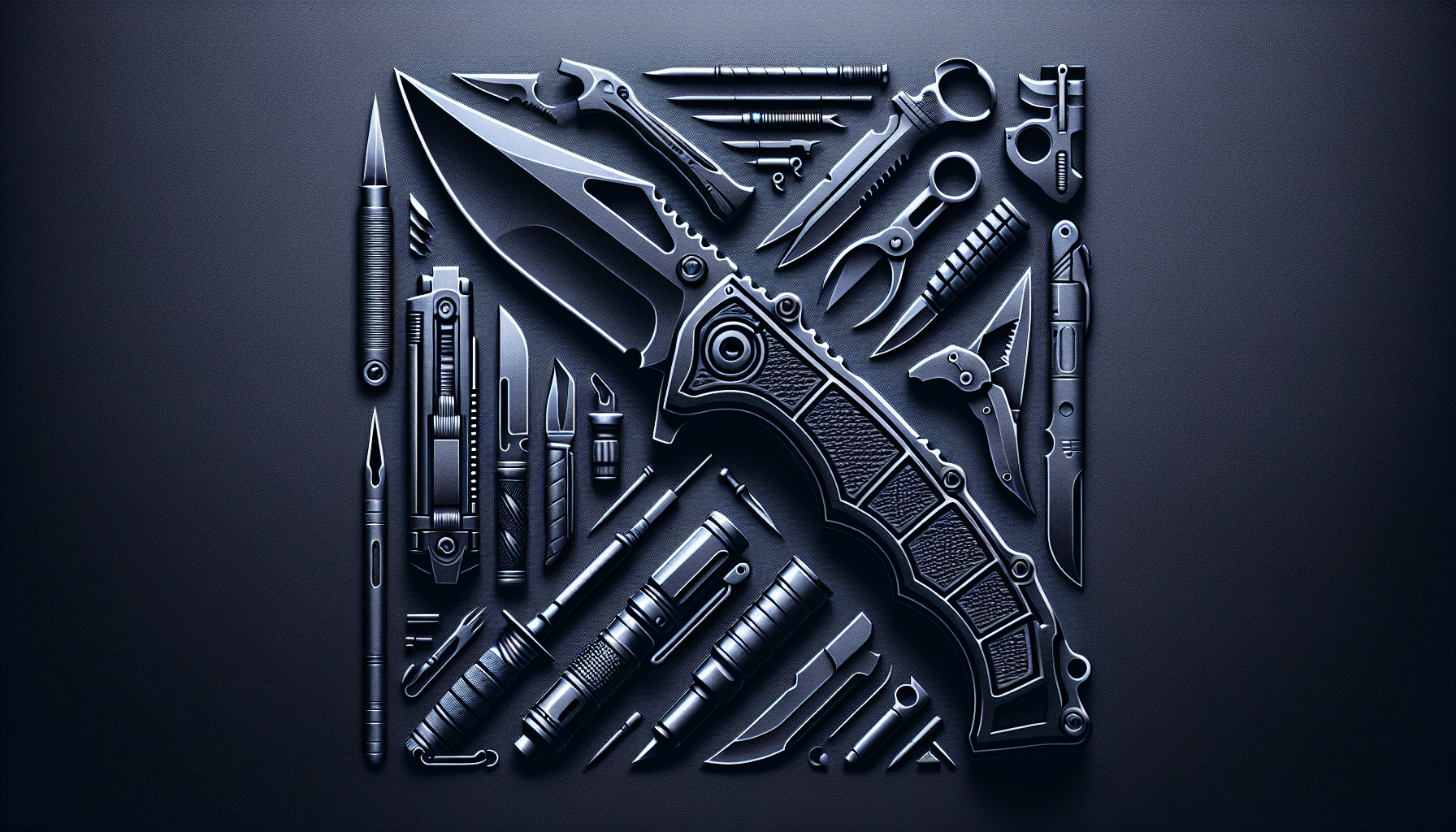
Understanding the Basics of Tactical Knives For Selecting The Right Tactical Knife For You
When it comes to knives, there are a wide variety of options available, each designed with a specific purpose in mind. One such type is the tactical knife. What sets tactical knives apart from other types of knives is their unique design and functionality. These knives are specifically crafted to meet the demands of various situations, ranging from self-defense to outdoor survival. Understanding the basics of tactical knives is essential in order to make an informed decision when selecting the right one for you.
Differentiating between Tactical Knives and Other Types of Knives
The first step in understanding tactical knives is to differentiate them from other types of knives. While all knives serve the purpose of cutting, tactical knives are designed with specific features that make them suitable for certain situations. Unlike kitchen knives or utility knives that are primarily used for everyday tasks, tactical knives are built for more rugged and demanding situations. They are typically sturdier, have a stronger blade, and often come with additional features like a glass breaker or seatbelt cutter.
Benefits of Using a Tactical Knife
Using a tactical knife offers a range of benefits that make them a valuable tool in various scenarios. One of the main advantages of a tactical knife is the element of self-defense it provides. The strong and sharp blade of a tactical knife can be used to protect yourself in dangerous situations. Additionally, tactical knives are designed to be versatile and multi-functional, making them useful for a wide range of tasks. Whether you need to cut through ropes, open packages, or even start a fire, a tactical knife can be your go-to tool.
Common Features of Tactical Knives
Tactical knives share several common features that set them apart from other types of knives. One key feature is the blade’s material, which can vary greatly depending on the intended use of the knife. Another common feature is the blade design and pattern, which can significantly affect the knife’s cutting abilities. Additionally, the handle material and design play a crucial role in providing a comfortable and secure grip. Finally, the size and weight of a tactical knife are important factors to consider, as they can impact its portability and functionality.
Considering the Purpose of Your Knife
Before diving into the world of tactical knives, it is essential to consider your specific needs and the intended purpose of the knife. By identifying the primary use of your tactical knife, you can narrow down your options and select a knife that suits your requirements perfectly.
Identifying the Intended Use of Your Tactical Knife
The first step in selecting the right tactical knife is to determine its primary purpose. Are you looking for a knife for self-defense, outdoor adventures, or multi-functional tasks? By understanding the intended use, you can narrow down the features you require in a tactical knife and choose one that fits your needs.
Defensive Purposes
If your primary concern is self-defense, you’ll want a tactical knife that is both reliable and easily deployable. Look for a knife with a strong and sharp blade that can inflict serious damage when necessary. Quick and smooth opening mechanisms, such as assisted opening or automatic opening, can be advantageous in emergency situations. Additionally, considering the size and weight of the knife is crucial, as you’ll want something manageable and easy to handle.
Outdoor or Survival Purposes
For outdoor enthusiasts or those who enjoy survival activities, a tactical knife can be an essential tool. Look for a knife with a durable blade material that can withstand tough conditions and maintain its sharpness. Consider a partially serrated blade for versatile cutting options, as it allows you to tackle a variety of tasks. Additionally, a full tang construction provides added strength and durability, making the knife reliable in demanding situations.
Multi-Functional Purposes
If you’re looking for a tactical knife that can handle a variety of tasks, opting for a multi-functional design is key. Look for a knife that offers a combination of features, such as a built-in seatbelt cutter, glass breaker, or firestarter. These additional tools can be handy in emergency situations or everyday scenarios. Additionally, a pocket clip or lanyard hole can enhance the knife’s portability and accessibility.
Choosing the Blade Material
The blade material is a crucial factor to consider when selecting a tactical knife, as it directly impacts its strength, durability, and overall performance. Understanding the different types of blade materials available can help you make an informed decision.
Stainless Steel
Stainless steel is a popular choice for tactical knife blades due to its corrosion resistance and ease of maintenance. It is known for its durability and ability to retain sharpness, making it suitable for various tasks. However, different types of stainless steel alloys have varying degrees of hardness, so it’s essential to research the specific alloy used in the knife you’re considering.
Carbon Steel
Carbon steel blades excel in terms of durability and their ability to hold a sharp edge for extended periods. They are known for their toughness and resistance to wear and tear. However, carbon steel blades require more maintenance to prevent corrosion, as they are prone to rusting if not properly cared for.
Ceramic
Ceramic blades offer unique benefits, such as extreme hardness and resistance to corrosion. They also stay sharp for a long time and do not require frequent sharpening. However, ceramic blades can be more brittle than other materials, making them susceptible to chipping or breaking if used for heavy-duty tasks.
Titanium
Titanium is a lightweight yet strong material that is often used in tactical knives. It provides excellent corrosion resistance and durability while offering a lightweight and easy-to-carry design. Titanium blades are less prone to wear and tear, making them a reliable option for various applications.
Damascus Steel
Damascus steel blades are renowned for their visually appealing patterns and exceptional cutting performance. They are created by forging multiple layers of steel and then etching the blade to reveal unique patterns. Damascus steel blades offer excellent strength, sharpness, and durability, making them highly desirable for collectors and enthusiasts.
Exploring Blade Designs and Patterns
The design and pattern of a blade significantly contribute to its functionality and performance. Tactical knives come in various blade designs, each with its own advantages and suitable applications. Understanding the different blade designs and patterns will help you choose the right one for your needs.
Straight-Edge Blade
The straight-edge blade is the most common blade design found in tactical knives. It features a smooth, straight cutting edge, making it versatile for a wide range of tasks, from slicing to precise cutting. The straight-edge blade offers excellent control and is easy to sharpen, making it a popular choice among knife enthusiasts.
Serrated-Edge Blade
A serrated-edge blade features small, tooth-like serrations along the cutting edge. This design is particularly useful for cutting through tough materials such as ropes or fibrous materials. The serrations provide additional cutting power, allowing the knife to bite into the material and make quick work of it. However, these blades can be more challenging to sharpen compared to straight-edge ones.
Partially Serrated Blade
A partially serrated blade offers the best of both worlds by combining a straight cutting edge with a section of serrations closer to the handle. This design provides versatility, as the straight section allows for precise cutting, while the serrated section excels at tasks that require more aggressive cutting power.
Tanto Point Blade
The tanto point blade originated from Japanese sword design and features a strong triangular tip with a flat edge. This design provides excellent stabbing and piercing capabilities, making it a suitable choice for self-defense applications. The tip’s geometry adds strength and durability to the blade, making it less prone to bending or breaking.
Drop Point Blade
The drop point blade is characterized by a convex curve along the spine, which slopes down to meet the point of the blade. This design offers versatility and strength, making it suitable for a wide range of tasks. The drop point blade excels at tasks such as slicing, skinning, and general utility tasks.
Clip Point Blade
The clip point blade features a concave cut-out area on the spine, creating a sharply pointed tip. This design enhances the knife’s piercing capabilities and enables precise cuts. The clip point blade is often found in tactical knives and is suitable for various applications, from self-defense to everyday tasks.
Spey Point Blade
The spey point blade is characterized by a straight spine that curves downward at the tip, forming a point that is less likely to unintentionally penetrate objects. This blade design is commonly used for tasks requiring precision, such as skinning or delicate cutting. The lack of a sharp point makes it less suitable for self-defense purposes.
Hawksbill Blade
The hawksbill blade features a concave cutting edge that curves downward sharply, resembling the beak of a hawk. This unique design is primarily used for specialty tasks such as cutting through belts or ropes without the risk of accidental injury. While less versatile than other blade designs, the hawksbill blade excels in specific applications.
Wharncliffe Blade
The wharncliffe blade offers a straight cutting edge that slopes upward sharply to meet the spine, creating a tip with excellent control and precision. This blade design is often used for detail work, such as scoring or precise cutting. While not as versatile as other blade designs, the wharncliffe blade is highly effective for specific tasks.
Dagger Blade
The dagger blade features double-edged symmetrical blades that come to a sharp point, making it ideal for self-defense purposes. The dual cutting edges enhance the knife’s stabbing capabilities, while the sharp point allows for precise and controlled thrusting. Due to its design, the dagger blade may have legal restrictions in some areas.
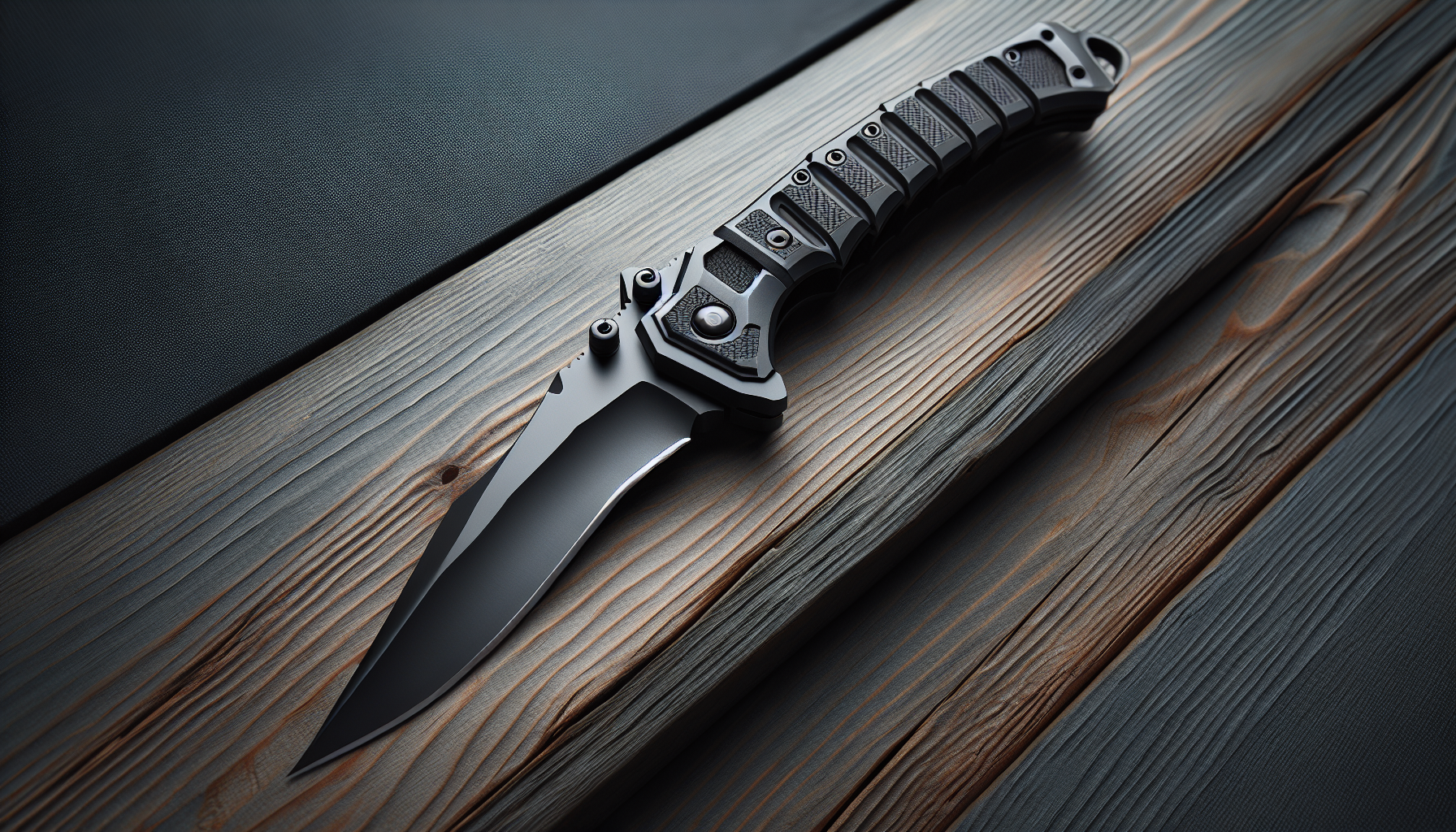
Understanding Knife Handle Materials and Design
While the blade is undoubtedly a vital component of a tactical knife, the handle plays an equally important role in ensuring comfort, grip, and overall usability. Tactical knives come in a range of handle materials and designs, each offering its own benefits.
Different Types of Handle Materials
Tactical knife handles are commonly crafted from various materials, each with its unique characteristics and advantages. The choice of handle material depends on personal preference, as well as considerations such as durability, grip, and aesthetics.
G-10
G-10 is a popular handle material due to its durability, strength, and resistance to moisture and chemicals. It is made from layers of fiberglass cloth impregnated with epoxy resin, resulting in a lightweight and sturdy handle. G-10 handles offer excellent grip and are available in a variety of textures and colors.
Micarta
Micarta is a composite material made by layering fabric or paper with resin. It provides excellent grip and is known for its durability and resistance to moisture and temperature changes. Micarta handles have a natural feel and often offer a comfortable and secure grip, even in wet or slippery conditions.
Carbon Fiber
Carbon fiber handles boast exceptional strength-to-weight ratios, making them highly desirable in tactical knives. They offer a lightweight design without compromising on durability or grip. Carbon fiber handles are often found in high-end knives and provide a sleek and modern aesthetic.
Stainless Steel
Stainless steel handles offer durability and resistance to corrosion. They are easy to clean and maintain and can withstand heavy-duty use. Stainless steel handles are often found in folding knives and provide a sturdy and reliable grip.
Titanium
Titanium handles combine lightweight design with excellent strength and corrosion resistance. They offer a durable and long-lasting handle option while reducing overall weight, making them ideal for those looking for a lightweight yet reliable tactical knife.
Rubberized Grips
Rubberized grips on tactical knife handles provide enhanced grip and comfort. They offer excellent slip resistance, even in wet or sweaty conditions. Rubberized handles are suitable for tactical knives intended for outdoor use or applications where a secure grip is crucial.
Ergonomic Designs
Ergonomic handle designs focus on providing a comfortable grip, reducing hand fatigue, and enhancing overall usability. These handles are often contoured, with textured surfaces to improve grip and prevent the knife from slipping out of your hand. Ergonomic handle designs are essential for prolonged use or tasks that require a firm and comfortable grip.
Evaluating Knife Size and Weight
The size and weight of a tactical knife should be carefully considered to ensure it is suitable for your needs. Factors such as intended use, portability, and personal preference play a significant role in determining the ideal size and weight.
Considering the Ideal Size for Your Needs
The ideal size of a tactical knife depends on the tasks you intend to accomplish with it. For self-defense purposes, a compact and easily concealable knife may be preferable. On the other hand, outdoor enthusiasts may opt for a larger knife with a longer blade to handle various tasks encountered in nature.
Factors to Consider When Choosing Size
When selecting the size of your tactical knife, consider factors such as blade length, handle length, and overall length. A longer blade may be beneficial for tasks requiring more reach or cutting power. However, a longer blade may also be less practical for everyday carry or self-defense situations, where a compact size is desired. Similarly, handle length is important for ensuring a comfortable grip and avoiding hand fatigue during extended use.
Balancing Weight and Functionality
The weight of a tactical knife plays a crucial role in determining its usability. A lightweight knife is often more comfortable to carry and use for extended periods. However, it is important to strike a balance between weight and functionality. A knife that is too lightweight may sacrifice important features or durability. It is essential to consider your specific needs and find a knife that offers the right combination of weight and functionality.
Choosing a Folding or Fixed Blade Knife
Tactical knives come in two main types: folding knives and fixed blade knives. Folding knives are compact and easy to carry, making them convenient for everyday carry or situations where portability is essential. Fixed blade knives, on the other hand, offer increased strength, reliability, and cutting performance. They are often preferred for more demanding tasks or situations where quick deployment is necessary. Consider the intended use and your personal preferences when choosing between a folding and fixed blade knife.
Assessing the Opening Mechanism
The opening mechanism of a tactical knife determines how it can be deployed for use. Different opening mechanisms offer varying degrees of speed and ease of use, so it is important to consider your preferences and requirements when selecting a tactical knife.
Types of Opening Mechanisms
Tactical knives offer a range of opening mechanisms to suit different needs and preferences. Understanding the common types of opening mechanisms will help you make an informed decision.
Manual Opening
Manual opening refers to knives that require manual intervention to open the blade. This typically involves using the thumb or finger to manually slide or flip the blade open. Manual opening mechanisms provide an element of control and are often found in traditional folding knives. While they may require both hands for deployment, manual opening knives offer reliability and simplicity.
Assisted Opening
Assisted opening knives combine manual effort with an internal mechanism to assist in blade deployment. These knives feature a spring or torsion bar that assists in opening the blade once initiated by the user. Assisted opening mechanisms typically allow for quick and smooth blade deployment with a single hand. They strike a balance between speed and control, making them popular among tactical knife users.
Automatic Opening
Automatic opening, also known as switchblade, refers to knives that fully open with the press of a button or lever. These knives rely on a strong spring mechanism to quickly and forcefully deploy the blade. Automatic opening knives offer rapid deployment and ease of use, as they can be conveniently operated with one hand. However, it is important to note that the legality of automatic opening knives varies by jurisdiction, so it is crucial to research and comply with local laws and regulations.
Understanding Locking Mechanisms
Locking mechanisms in tactical knives play a vital role in ensuring the safety and stability of the blade during use. Different types of locking mechanisms are available, each offering its unique advantages.
Different Types of Locking Mechanisms
Tactical knives employ a variety of locking mechanisms to keep the blade securely in place during use. Understanding the common types of locking mechanisms will help you choose a knife that suits your needs.
Liner Lock
The liner lock is one of the most common locking mechanisms found in folding knives. It features a spring-loaded metal liner that locks the blade open. When the blade is deployed, the liner moves into place, preventing accidental closure. To close the blade, the user must manually move the liner to release the blade.
Frame Lock
The frame lock is similar to the liner lock but uses the handle’s frame as the locking mechanism instead of a liner. When the blade is open, a portion of the handle’s frame moves behind the blade, providing secure locking. The blade can be released by moving the frame aside manually. The frame lock offers excellent stability and is commonly found in heavy-duty folding knives.
Axis Lock
The axis lock mechanism is renowned for its strength, reliability, and ambidextrous operation. An axis lock features a small metal bar that moves into place to lock the blade open. It is located near the pivot point of the knife, providing stability and a smooth locking action. To release the blade, the user simply moves the lockbar to the side.
Back Lock
The back lock is a traditional and reliable locking mechanism commonly found in folding knives. It features a metal bar on the back of the handle that locks the blade open. To release the blade, the user manually presses down on the lock to disengage it. Back locks offer simplicity, strength, and ease of maintenance.
Ball Bearing Lock
The ball bearing lock is a locking mechanism that uses a large ball bearing to secure the blade in place. When the blade is fully deployed, the ball bearing moves into a detent, preventing accidental closure. The blade can be easily released by manually moving the ball bearing.
Lockback
The lockback mechanism is a reliable and sturdy method of locking a folding knife. It features a spring-loaded metal bar on the back of the handle that locks into a notch on the blade. To close the blade, the user must manually compress the spring and disengage the lock. Lockbacks provide excellent stability and are commonly found in traditional pocket knives.
Exploring Additional Features
Tactical knives often come with additional features that can enhance their functionality and versatility. Understanding these features will help you choose a knife that meets your specific needs and preferences.
Integrated Safety Mechanisms
Some tactical knives incorporate safety mechanisms to prevent accidental blade deployment. These mechanisms, such as blade locks or switches, provide an extra layer of protection by ensuring the blade remains securely closed when not in use.
Glass Breaker
A glass breaker is a specialized feature commonly found in tactical knives designed for emergency situations or vehicle rescues. It consists of a hardened steel tip specifically designed to shatter glass windows, allowing for quick and safe exits in trapped or emergency situations.
Seatbelt Cutter
Tactical knives equipped with a seatbelt cutter offer added functionality in emergency scenarios, particularly in vehicle-related incidents. The seatbelt cutter is a specialized notch or blade that enables quick and safe cutting of seatbelts, providing an essential tool for freeing oneself or others from entrapment.
Firestarter
Tactical knives with integrated firestarters are invaluable tools for outdoor enthusiasts or survival situations. These firestarters are often made of materials such as ferrocerium or magnesium and can be used to create sparks to ignite tinder, helping start and maintain a fire.
Bottle Opener
A bottle opener is a simple yet practical feature that can be found on many tactical knives. It allows for easy opening of beverage bottles, making it a convenient tool for outdoor activities or everyday use.
Pocket Clip
A pocket clip provides a convenient and secure way to carry your tactical knife. It allows you to clip the knife to your pocket, belt, or gear for easy access and prevents it from getting lost or misplaced. In addition to improving portability, a pocket clip also contributes to the knife’s accessibility during tasks or emergencies.
Lanyard Hole
A lanyard hole is a small hole typically located at the end of the knife’s handle. It allows you to attach a lanyard or cord, providing additional security and preventing accidental drops or loss. A lanyard can also be used to ensure quick and easy retrieval of the knife from a pocket or bag.
Full Tang Construction
Full tang construction refers to a knife design in which the blade extends the full length of the handle, creating a solid and robust structure. Knives with full tang construction offer exceptional strength, durability, and stability, making them suitable for heavy-duty tasks and demanding conditions.
MOLLE-Compatible Sheath
MOLLE (Modular Lightweight Load-carrying Equipment) is a system commonly used in military and tactical gear to provide versatile and secure attachment options. Tactical knives with MOLLE-compatible sheaths can be easily attached to MOLLE webbing or other compatible gear, offering convenient carry and accessibility options.
Researching and Comparing Brands and Models
After understanding the various aspects and features of tactical knives, conducting research and comparing different brands and models is crucial to finding the right knife for you. Consider reputable brands known for their quality and durability. Read customer reviews and ratings to gain insights into the real-world experiences of others. Additionally, compare specifications and features to ensure you select a knife that aligns with your specific needs and preferences.
By taking the time to understand the basics of tactical knives, considering the purpose of your knife, evaluating blade materials, exploring blade designs and patterns, understanding handle materials and design, assessing size and weight, familiarizing yourself with opening mechanisms and locking mechanisms, exploring additional features, and conducting proper research and comparisons, you can confidently select the right tactical knife that will serve you well in any situation. Whether for self-defense, outdoor adventures, or multi-functional use, a well-chosen tactical knife can be an indispensable tool that you can rely on for years to come.

